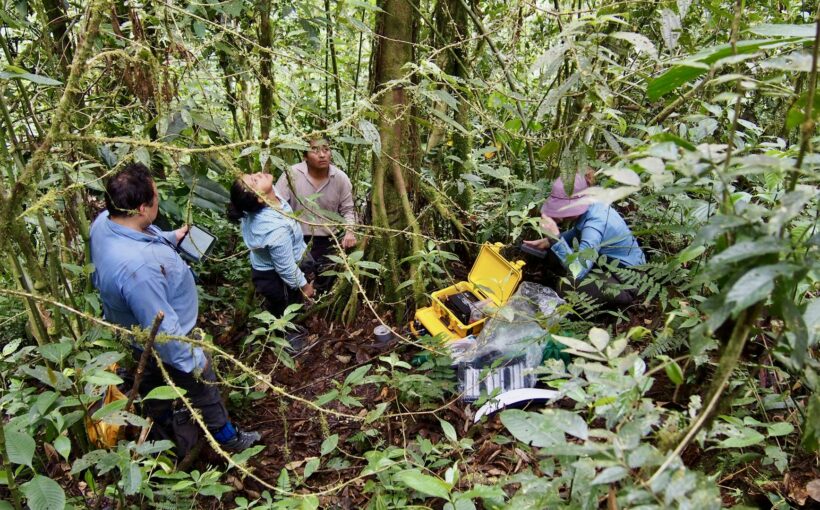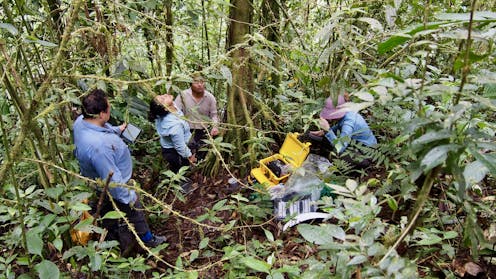
Tree bark in the world’s forests absorbs the greenhouse gas methane, my colleagues and I have demonstrated for the first time on a global scale – a discovery that could have big implications for tackling climate change.
As trees photosynthesise, their leaves take up carbon dioxide (CO₂) and lock it away as biomass in their trunks and branches providing a long-term store of carbon. But now, our large-scale study proves that there’s another way that trees absorb greenhouse gases – so forests can provide even more climate benefits than previously thought.
Methane has contributed about a third of the observed climate warming since preindustrial times. Concentrations of methane in the atmosphere have been rising rapidly for the best part of two decades.
That’s a real problem for Earth’s climate because methane traps much more heat in the atmosphere than the equivalent amount of CO₂. But while CO₂ can last in the atmosphere for hundreds of years, methane has a lifetime of around ten years.
This short atmospheric lifetime means that any changes to sources of methane or processes that remove methane from the atmosphere (known as methane sinks) can have rapid effects. If removal is enhanced, this can be a quick climate win helping to mitigate escalating climate change.
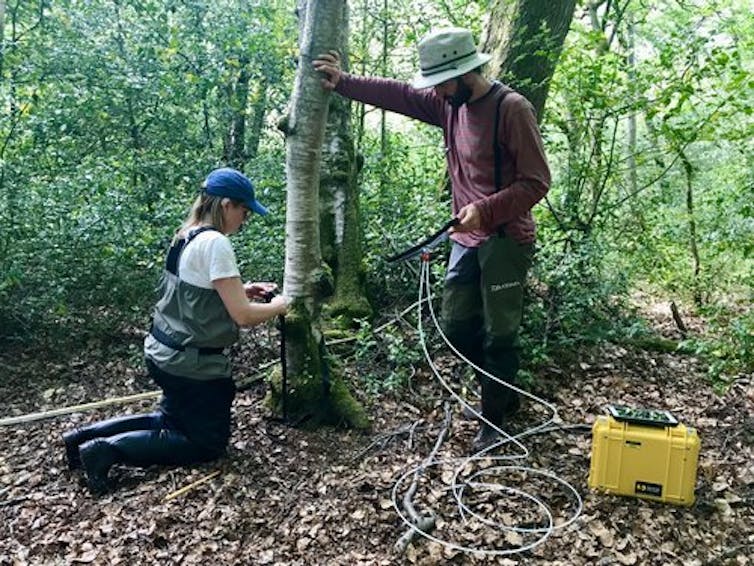
That’s why researchers are so interested in understanding how methane gets into the atmosphere and how different processes remove it. It’s why my team of ecologists and climate scientists have been studying the exchange of methane between tree bark, a surface that had previously been overlooked for its climate contribution, and the atmosphere.
Wetlands are known to be the primary natural source of methane – trees in swamps and floodplains can emit methane from the lower portions of their trunks. But methane exchange in trees growing on free-draining soils that don’t flood – that includes most of the world’s forests – has not been well-studied, until now.
We measured methane exchange on hundreds of tree stems in forests along a climate gradient spanning the Amazon and Panama, through to Sweden and forests near Oxford in the UK. We used a simple plastic chamber that wrapped around the tree trunk which was then connected to a laser-based methane analyser.
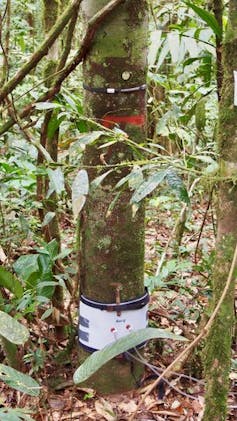
At first, we looked for methane emissions from trees, and some do emit a small amount from their trunk base. But the surprise happened when we measured higher up the trunks: trees were taking up methane from the atmosphere and this methane removal grew stronger the higher up we went, with methane removal from the atmosphere dominating overall exchange.
Next, we investigated whether this was a globally important process. To do this we needed to calculate the global area of tree bark. Using a technique called terrestrial laser scanning, we mapped tree woody surfaces down to the finest twig.
We discovered that, if the bark from all the world’s trees were laid flat, it would cover all of Earth’s land surface. Potentially, this represents a vast area for gas exchange between tree bark and the atmosphere but this mechanism is still poorly understood.

An untapped sink
In total, our cautious first estimate is that trees take up between about 25 and 50 million tonnes of atmospheric methane each year, with most taken up by tropical forests.
This is similar to the only other land-based methane sink – soils – and it makes temperate and tropical trees 7%-12% better for climate than they are currently credited for.
But unlike soil, which isn’t changing in area, forests are contracting and expanding through deforestation and reforestation – these changes can influence atmospheric methane. If we reforest and plant trees in the right place, more methane could be drawn down from the atmosphere.
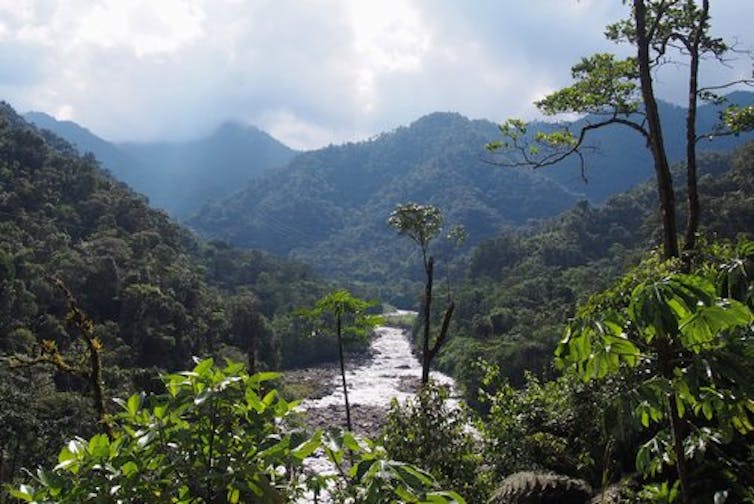
Clearly, decarbonisation of the global economy and energy system is the key way to address climate change. But, this capacity for tree bark to absorb methane offers another angle of attack as a nature-based climate solution.
There may be new ways to improve methane uptake in plantation forestry, by selecting trees that are particularly good at atmospheric methane removal or modifying tree bark microbial communities.
Nations could be given greater incentives to preserve existing natural forest and avoid further deforestation. Expensive reforestation projects may become more economically viable under reputable carbon offset schemes that consider methane.
This new evidence reinforces the importance of trees and forests for our climate system while demonstrating there is still much to learn about these valuable ecosystems.

Don’t have time to read about climate change as much as you’d like?
Get a weekly roundup in your inbox instead. Every Wednesday, The Conversation’s environment editor writes Imagine, a short email that goes a little deeper into just one climate issue. Join the 35,000+ readers who’ve subscribed so far.
![]()
Vincent Gauci receives funding or has received funding from the Natural Environment Research Council, The Royal Society, Spark Climate Solutions, Axa Research Fund, Defra.
